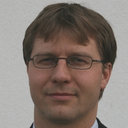Sugar in Infants, Children and Adolescents: A Position Paper of the European Society for Paediatric Gastroenterology, Hepatology and Nutrition Committee on Nutrition.
キーワード
概要
The consumption of sugars, particularly sugar-sweetened beverages (SSBs; beverages or drinks that contain added caloric sweeteners (ie, sucrose, high-fructose corn syrup, fruit juice concentrates), in European children and adolescents exceeds current recommendations. This is of concern because there is no nutritional requirement for free sugars, and infants have an innate preference for sweet taste, which may be modified and reinforced by pre- and postnatal exposures. Sugar-containing beverages/free sugars increase the risk for overweight/obesity and dental caries, can result in poor nutrient supply and reduced dietary diversity, and may be associated with increased risk of type 2 diabetes mellitus, cardiovascular risk, and other health effects. The term "free sugars," includes all monosaccharides/disaccharides added to foods/beverages by the manufacturer/cook/consumer, plus sugars naturally present in honey/syrups/unsweetened fruit juices and fruit juice concentrates. Sugar naturally present in intact fruits and lactose in amounts naturally present in human milk or infant formula, cow/goat milk, and unsweetened milk products is not free sugar. Intake of free sugars should be reduced and minimised with a desirable goal of <5% energy intake in children and adolescents aged ≥2 to 18 years. Intake should probably be even lower in infants and toddlers <2 years. Healthy approaches to beverage and dietary consumption should be established in infancy, with the aim of preventing negative health effects in later childhood and adulthood. Sugar should preferably be consumed as part of a main meal and in a natural form as human milk, milk, unsweetened dairy products, and fresh fruits, rather than as SSBs, fruit juices, smoothies, and/or sweetened milk products. Free sugars in liquid form should be replaced by water or unsweetened milk drinks. National Authorities should adopt policies aimed at reducing the intake of free sugars in infants, children and adolescents. This may include education, improved labelling, restriction of advertising, introducing standards for kindergarten and school meals, and fiscal measures, depending on local circumstances.



